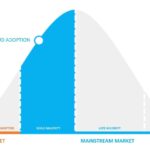Revenue Recognition for SaaS: Challenges and Best Practices
The U.S. has 9,100 SaaS companies, and this number is likely to continue rising. Software-as-a-service is a hot commodity because it eliminates the need for hosting and scaling for consumers or businesses, and the subscription model is very popular. But there’s a problem for new entities: revenue recognition for SaaS companies.
If you don’t record your revenue properly, it can impact your financials and make it seem like your revenue is much higher than it really is.
Any company that reports to the following will need to have strict revenue recognition in place:
- Shareholders
- Investors
- Lenders
What is Revenue Recognition?
Revenue is a part of the Generally Accepted Accounting Principles (GAAP). Your business accounts for revenue on financial statements, but what happens in a scenario where a customer signs a one-year contract to use your service for $8,400?
If you account for the $8,400 on your financial statements right, this may pose a problem.
If you follow GAAP, revenue should be recognized when:
- Service obligations are satisfied
- Product obligations are satisfied
In this case, SaaS companies are in a unique position because they may only recognize $700 per month over 12 months using revenue recognition until the contract expires.
Complexities That the SaaS Business Model Brings to Revenue Recognition
SaaS companies revolve around the subscription model, and there is always the risk of refunds, disputes and even prorations. If an update to subscriptions occurs, it can lead to issues with deferring revenue properly.
Accounting standards can help you break through the confusion with procedures that are followed time and time again to recognize revenue properly.
Accrual accounting is ideal for SaaS companies because it helps track monthly recurring revenue (MRR).
Revenue Recognition for SaaS and ASC 606
Accounting Standards Codification (ASC) 606 outlines a framework for recognizing revenue that businesses can follow, including SaaS companies. Remaining compliant is beneficial for any SaaS company, especially those that:
- Plan to go public
- Reach $25+ million in revenue
- Are startups planning to raise capital with loans or investors
Below are the five steps of revenue recognition that are outlined in ASC 606.
1. Identify the Contract with a Customer
First, what are the performance obligations for all parties in the contract? The contract must be approved, and both parties must understand their obligations. You should identify:
- Customer and business rights for the service
- Payment terms for the service
- Commercial substance
A business must be likely to collect the payment in exchange for the service it renders to the customer.
2. Identify the Performance Obligations in the Contract
SaaS companies must meet performance obligations or promises to the customer. The contract should itemize these requirements. Services must be of value to the customer.
3. Determine the Transaction Price
Non-cash and cash compensation may be part of the transaction price. What is it that your business will receive as per the contract? You need to have every factor included in the price listed, such as:
- Customizations
- Discounts
- Prorations
- Upgrades
- Etc.
You want the transaction price to be as clear and defined as possible.
4. Allocate the Transaction Price
Transaction prices must be distributed as per the performance obligations in the contract. For example, SaaS companies with recurring payments must meet these requirements each month – or the designated period – to allocate the transaction price.
Perhaps you offer a quarterly subscription, and for two months of the three, your service was down.
In this case, you failed to render the service in the contract, and allocation can be very complex. You’re also likely to have to refund any money that may have been prepaid for this period.
5. Recognize the Revenue
If all performance obligations are met, you can recognize the revenue. As performance milestones are hit, you can recognize the revenue. For example, you may have as a SaaS company:
- Single obligations, which means that the revenue is met when the order is fulfilled.
- Continuous obligations, which relate to SaaS companies. If a customer pays $99 per month to use your service and commits to a year of service, you can attribute the $99 to the respective period when the payment is made.
When using the continuous model, you cannot account for the lump sum fee at the time of payment but rather, break this fee down into monthly milestones. For example, $99 is accounted for the month of January after you’ve satisfied all of the contractual obligations for the month.
Revenue recognition for SaaS companies allows owners and key stakeholders to maintain greater control of finances and understand when revenue can be counted as being earned. Accounting for revenue can be very complex due to the risk of refunds or disputes.
We can help.
Schedule a consultation to discuss revenue recognition for your SaaS company and how we can keep your books accurate!










